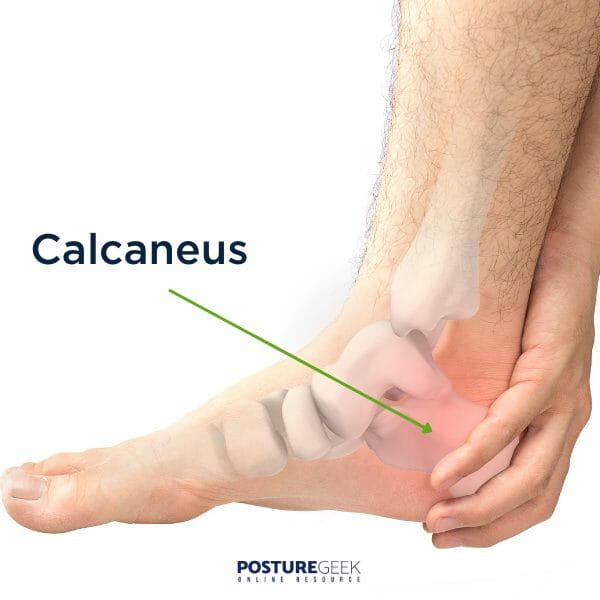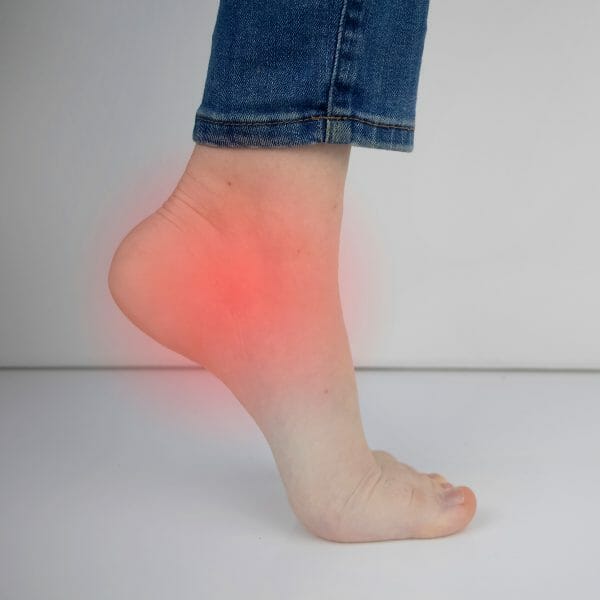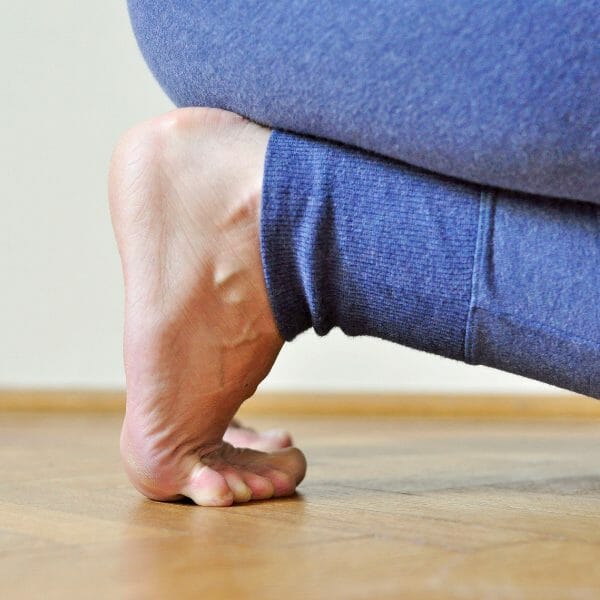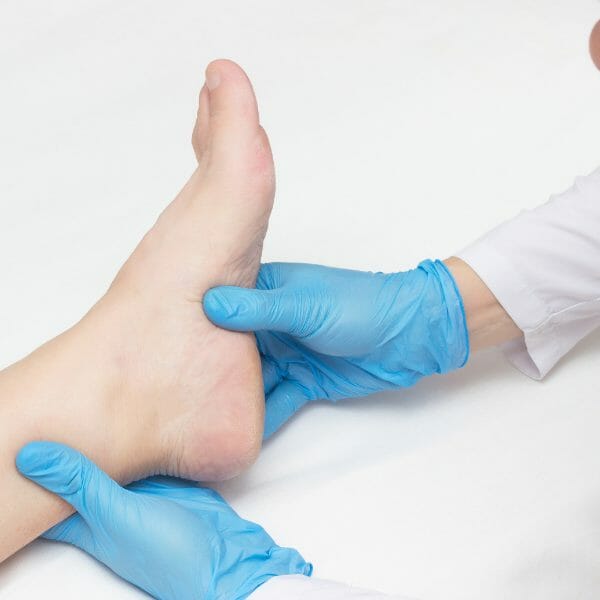Heel pain in the morning: everything you need to know
Do you wake up in the morning with heel pain? If so, you're not alone. Morning heel pain is a common problem that many people experience
PostureGeek.com Tweet
Do you wake up in the morning with heel pain? If so, you’re not alone. Morning heel pain is a common problem that many people experience. This blog post will discuss what can cause heel pain, who is most likely to experience it, and what you can do to treat it. We hope this information helps you find relief from your heel pain!
What exactly is the heel?

The heel is the bony prominence at the back of the foot. The actual bone is referred to as the Calcaneus. The heel is made up of a number of different tissues, including skin, fat, and the Calcaneus itself.
What is heel pain?
Heel pain is any discomfort in the area of the heel. It can be sharp, dull, or aching. It can be caused by several things, including injury, overuse, or underlying medical conditions.
Why is it so bad in the morning?

There are a few reasons why heel pain might worsen in the morning.
One reason is that the connective tissue (or fascia) around the heel bone and bottom of the foot (the plantar fascia) tightens overnight. This can cause the tissue to pull on the heel bone and lead to sudden pain.
Another reason can be that you may have been standing or walking more during the day than you were the day before. This can lead to inflammation, causing pain in the heel.
What can cause morning Heel pain?

There are a number of different things that can cause morning heel pain.
Plantar Fasciitis
One common cause is plantar fasciitis, inflammation of the tissue that runs along the bottom of your foot. This tissue is called the plantar fascia, and when it becomes inflamed, it can cause stabbing heel pain.
It usually causes sharp, stabbing pain in the morning or after a long period of rest or standing.
Why, then, is heel discomfort most prevalent in the early morning and not all of the time or even while exercising?
The plantar fascia causes one of the most common overuse syndromes. It all depends on how your plantar fascia responds to cycles of weight-bearing (standing, running etc.) and rest. At night, the plantar fascia relaxes and contracts. This can happen while sitting at a computer all day or going on a long drive.
When you get up in the morning and move around, the plantar fascia and calf muscles are still in this shortened, contracted state. So as they warm up and lengthen out, they pull on the heel bone, causing that initial sharp pain.
Achilles Tendonitis
Other causes of heel pain include Achilles tendonitis, which is inflammation of the tendon that attaches the calf muscle to the back of the heel bone; and,
Haglund’s Deformity
People suffering from Haglund’s deformity have a bony enlarged heel. Haglund’s deformity is known as the “pumps bump” because it’s commonly found in those in high heels. Any shoes with a stiff back, including dress shoes and rink sleds, are likely to irritate the heel back.
Heel Spur
A heel spur is a bony projection that forms on the heel bone. It is caused by inflammation of the tissue that connects the heel bone to the toes (the plantar fascia). Heel spurs can cause heel pain, especially when standing or walking.
Calcaneus fracture following a traumatic event
This is a break in the heel bone. It can be caused by a fall, car accident, or other trauma to the heel. A calcaneus fracture can cause severe pain and swelling in the heel.
What age does heel pain mainly affect?
Heel pain can affect people of all ages, but it is most common in adults aged 40-60. It is also more common in women than men.
What can you do to treat heel pain?

There are a number of different treatments:
Plantar Fasciitis
If you have plantar fasciitis pain, your health care provider may recommend stretching and exercises to strengthen the muscles in your foot. They may also recommend wearing a night splint or orthotic devices.
- Night Splints: Night splints are beneficial because they stretch the plantar fascia and Achilles tendon while you sleep. This can help to prevent making morning heel pain worse.
- Orthotics: Orthotic devices, such as heel cups or arch supports, can also help treat heel pain. They work by cushioning the heel and providing support for the foot.
Achilles Tendonitis
If you have Achilles tendonitis, your health care provider may recommend:
- icing the area,
- taking anti-inflammatory medications, and
- doing exercises to stretch the Achilles tendon.
Heel Spur
Most heel spurs do not require treatment. However, if you have pain from a heel spur, your health care provider may recommend:
- exercises,
- stretching,
- ice,
- If these treatments do not relieve your pain, you may need surgery to remove the spur.
Haglund's Deformity
Haglund’s deformity is a bony enlargement on the back of the heel bone. It can be painful and make it difficult to wear shoes.
If you have Haglund’s deformity, your health care provider may recommend wearing a shoe with a higher heel or removing any bone spurs that have developed.
What are some risk factors leading to foot pain?
There are a number of different things that can increase your risk of developing heel pain. These include being overweight, having diabetes, wearing shoes that do not fit well or having an abnormal walking gait.
Other risk factors contribute to overuse injuries, such as running or other high-impact activities. This type of activity can lead to inflammation of the tendons in your foot, leading to heel pain.
If you have arthritis, this can also cause heel pain. Arthritis is a condition that causes inflammation in the joints, and this can also lead to heel pain.
Who can help with morning heel pain?

Several health care providers can assist with treatment options:
- Your family doctor: can diagnose and suggest treatment options for any issues that may arise.
- A physical therapist or physiotherapist: can help develop a stretching and exercise program.
- A Podiatrist: can assess your foot, make recommendations for orthotic devices or supportive footwear
- An orthopedic surgeon: may be required if other treatments do not relieve the pain or if there is a calcaneus fracture.
When should you seek medical attention for heel pain?
You should see your health care provider if you have heel pain that does not go away with home treatment or if the pain is severe. You should also see your health care provider if you have other symptoms, such as redness, swelling, or fever.
Your health care provider will ask about your medical history and symptoms. They will also do a physical exam. This may include checking your feet for tenderness, redness, swelling, or deformities. X-rays may be ordered to rule out other causes, such as a stress fracture or bone tumor.
Finally
- Icing the area.
- Taking over-the-counter pain medications.
- Wearing shoes with good support and cushioning.
Heel pain is a common problem, but it is essential to seek medical attention if the pain does not go away with home treatment or if the pain is severe. With the proper treatment, heel pain can be resolved, and you can get back to your normal activities.
PLEASE NOTE
PostureGeek.com does not provide medical advice. This information is for educational purposes only and is not intended to be a substitute for professional medical attention. The information provided should not replace the advice and expertise of an accredited health care provider. Any inquiry into your care and any potential impact on your health and wellbeing should be directed to your health care provider. All information is for educational purposes only and is not intended to be a substitute for professional medical care or treatment.
